Georgia is home to some of the most remarkable ancient churches and monasteries in the world. With its long history of Christianity, dating back to the 4th century, the country is dotted with spiritual landmarks that not only serve as places of worship but also reflect its architectural, artistic, and cultural heritage. Whether nestled in mountains, perched on hilltops, or hidden in caves, these religious sites are must-visits for travelers seeking to explore Georgia’s sacred and historical roots.
Here’s the ultimate guide to Georgia’s ancient churches and monasteries:
1. Svetitskhoveli Cathedral
Location: Mtskheta
Date: 11th century
UNESCO World Heritage Site
Svetitskhoveli Cathedral, located in Georgia’s ancient capital of Mtskheta, is one of the most sacred churches in the country. According to legend, it is the burial place of Christ’s robe, making it a vital pilgrimage site. The current structure dates back to the 11th century and is a masterpiece of medieval Georgian architecture, featuring beautiful frescoes, stone carvings, and a sense of grandeur.
Must-See Features:
- The ancient bell tower
- Elaborate stonework on the cathedral’s exterior
- Interior frescoes and the symbolic depiction of the Tree of Life
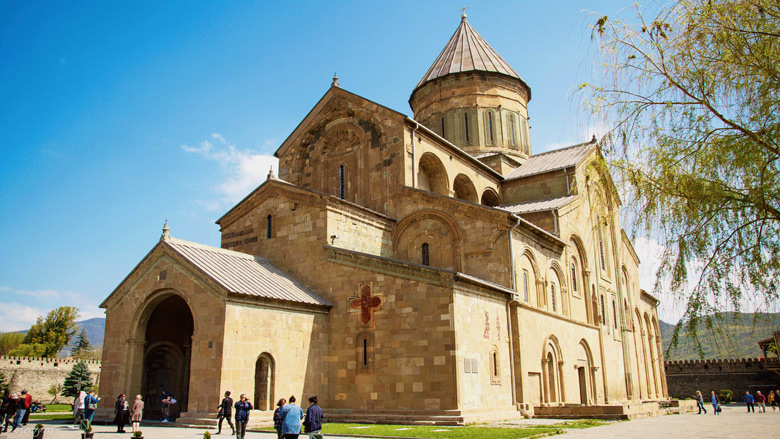
2. Jvari Monastery
Location: Mtskheta
Date: 6th century
UNESCO World Heritage Site
Jvari Monastery, meaning “Monastery of the Cross,” stands on a mountaintop overlooking the confluence of the Mtkvari and Aragvi Rivers. Built in the 6th century, this small yet stunning monastery marks the location where Saint Nino erected a wooden cross, symbolizing the arrival of Christianity in Georgia. The simplicity and symmetry of the church make it an excellent example of early Georgian Christian architecture.
Must-See Features:
- Panoramic views of Mtskheta and the surrounding countryside
- The small cross-shaped interior of the church
- The historical significance tied to Saint Nino
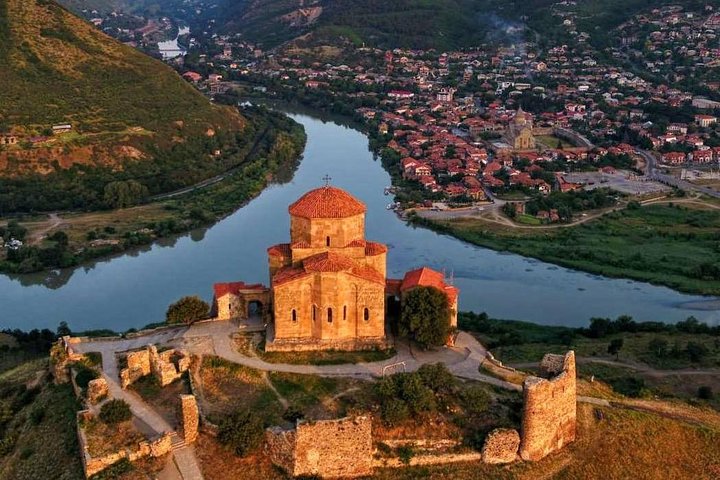
3. Gergeti Trinity Church (Tsminda Sameba)
Location: Stepantsminda (Kazbegi)
Date: 14th century
Perched dramatically at an elevation of 2,170 meters (7,120 feet) beneath Mount Kazbek, Gergeti Trinity Church is one of Georgia’s most iconic landmarks. The journey to the church, whether by hiking or a 4×4 drive, is as breathtaking as the destination itself. Its remote location and scenic backdrop make it a popular stop for trekkers and adventurers exploring the Kazbegi region.
Must-See Features:
- The iconic setting with Mount Kazbek in the background
- The simple stone architecture and peaceful interior
- Hiking trails leading to the church with spectacular views

4. Alaverdi Monastery
Location: Kakheti
Date: 6th century (current structure from the 11th century)
Located in the Kakheti wine region, Alaverdi Monastery is one of the oldest and tallest churches in Georgia, with a cathedral reaching 50 meters (164 feet). Initially established in the 6th century by Assyrian monk Joseph Alaverdeli, the present cathedral was built in the 11th century and has served as a spiritual center for centuries. The monastery is surrounded by vineyards, reflecting Georgia’s deep connection to viticulture.
Must-See Features:
- The massive central dome and 11th-century frescoes
- Vineyards around the monastery and local wine production
- The beautifully preserved medieval bell tower
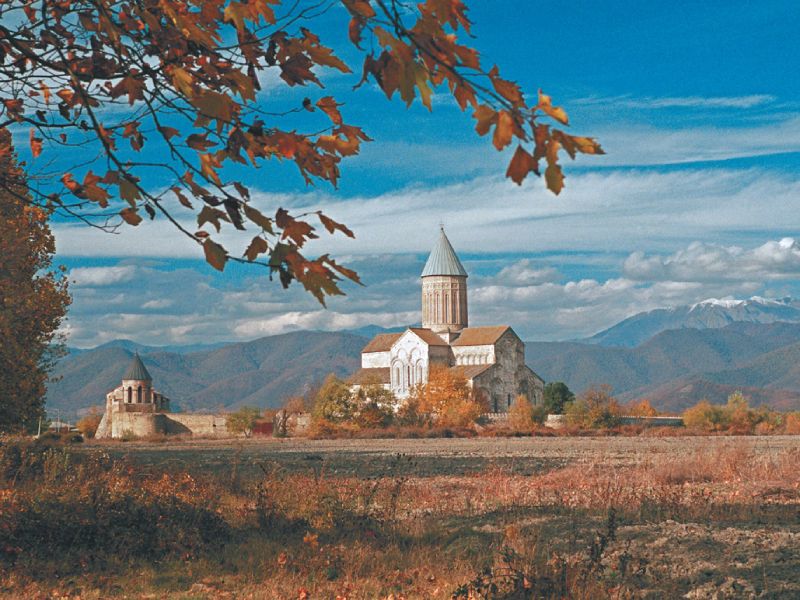
5. Vardzia Cave Monastery
Location: Samtskhe-Javakheti
Date: 12th century
Vardzia is a sprawling cave monastery complex built during the reign of Queen Tamar in the 12th century. Carved into the cliffs of the Erusheti Mountain, the monastery once housed up to 2,000 monks. The central cave church, dedicated to the Dormition of the Mother of God, is adorned with stunning frescoes, including a rare portrait of Queen Tamar herself. Vardzia is not only a religious site but also a feat of ancient engineering.
Must-See Features:
- Cave dwellings and tunnels cut into the cliffside
- The frescoes in the Church of the Dormition, particularly the portrait of Queen Tamar
- The panoramic views of the Kura River valley
.webp)
6. David Gareja Monastery Complex
Location: Kakheti
Date: 6th century
Situated in the arid semi-desert landscape on the border with Azerbaijan, David Gareja is one of the most unique and remote monastic complexes in Georgia. Founded by St. David Garejeli, one of the 13 Assyrian fathers who spread Christianity in Georgia, the complex consists of numerous churches and cave dwellings, many of which feature vibrant frescoes. The rugged setting and the isolation of the monastery enhance its spiritual atmosphere.
Must-See Features:
- The cave cells and frescoes in the Lavra and Udabno monasteries
- Views of the desert-like landscape from the Udabno complex
- The cultural and religious history of the monks who once lived there
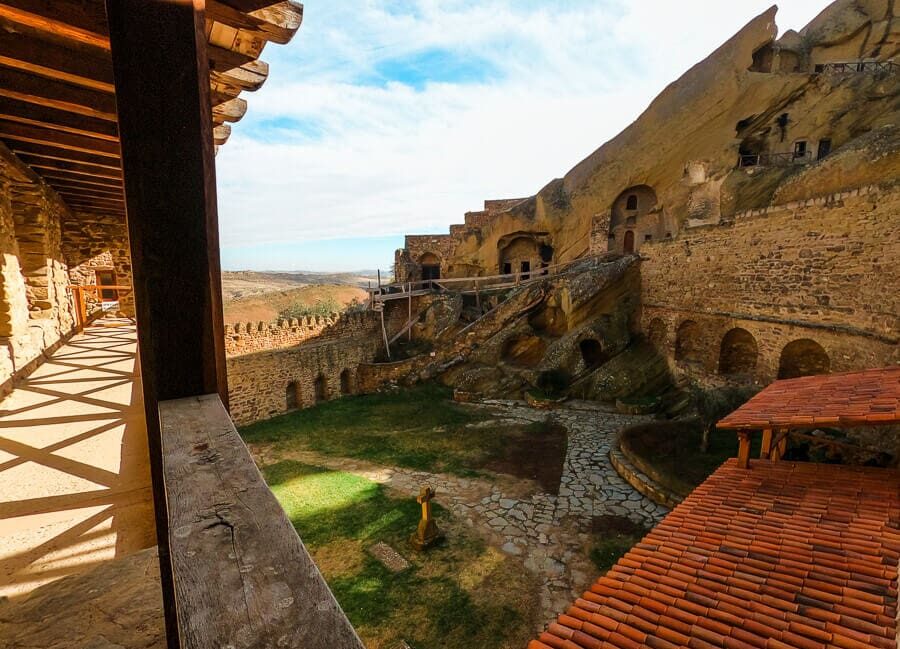
7. Gelati Monastery
Location: Kutaisi
Date: 12th century
UNESCO World Heritage Site
Gelati Monastery, located near Kutaisi, was founded by King David the Builder in the 12th century and is one of Georgia’s most important cultural and religious centers. It was once a center of learning and home to many scholars, earning it the reputation of being the “Second Jerusalem.” The cathedral within the monastery features stunning mosaics and frescoes and is the final resting place of King David IV.
Must-See Features:
- The magnificent 12th-century mosaics in the main church
- The grave of King David the Builder at the entrance of the cathedral
- The monastery’s academic history as a center of learning
.jpg)
8. Shio-Mgvime Monastery
Location: Near Mtskheta
Date: 6th century
Built into the cliffs of the Shio-Mgvime gorge, this monastery complex dates back to the 6th century and is named after St. Shio, one of the 13 Assyrian fathers. The serene location amidst the rocky landscape gives it an air of seclusion and peace. The complex includes several churches, and the small cave where St. Shio spent the final years of his life remains a pilgrimage site.
Must-See Features:
- The Monastery of St. John the Baptist with its 12th-century frescoes
- The cave cells where monks once lived
- The peaceful atmosphere in the remote gorge

9. Nekresi Monastery
Location: Kakheti
Date: 4th century
The Nekresi Monastery is one of the oldest Christian sites in Georgia, dating back to the 4th century. Located on a hill overlooking the Alazani Valley in Kakheti, Nekresi offers not only a fascinating historical experience but also breathtaking views of the surrounding vineyards and mountains. The complex consists of several churches, including the oldest surviving Christian church in Georgia.
Must-See Features:
- The 4th-century basilica, one of the earliest in Georgia
- The scenic view of the Alazani Valley
- The peaceful, hillside location surrounded by nature
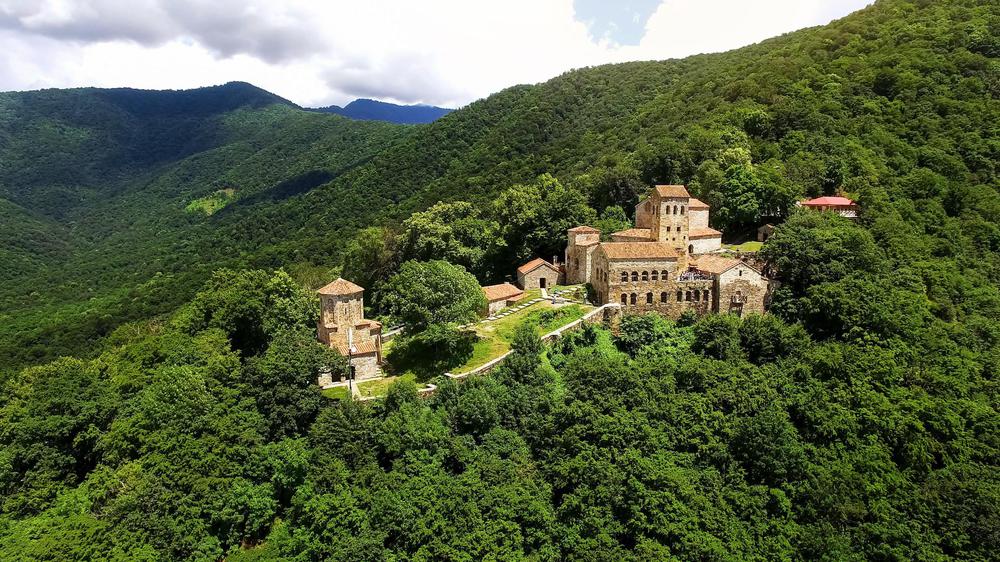
10. Svaneti’s Mountain Churches
Location: Svaneti
Date: 9th–14th centuries
The Svaneti region is renowned for its ancient stone towers and medieval churches scattered throughout the remote mountain villages. These churches, often small and modest in size, house some of Georgia’s finest examples of medieval frescoes and religious art. The churches of Lagurka (St. George’s Church) and Kala (Lamaria Church) are particularly famous for their art and architecture.
Must-See Features:
- The beautifully preserved frescoes inside the remote mountain churches
- The traditional Svan defensive towers alongside the churches
- The picturesque alpine setting of the villages
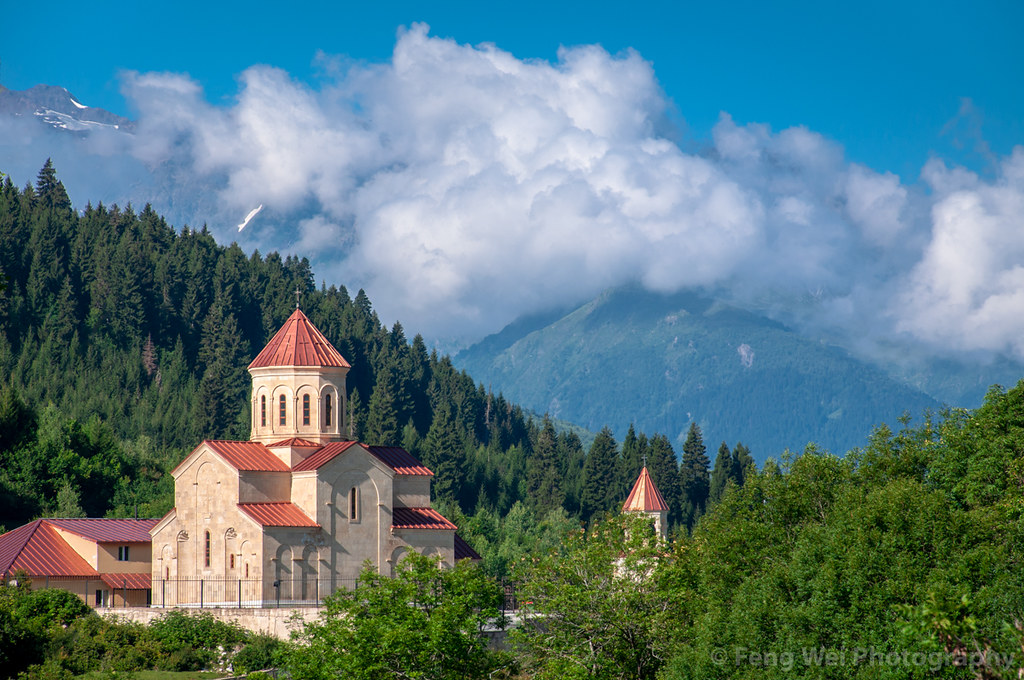
Conclusion
Georgia’s ancient churches and monasteries are an essential part of the country’s cultural landscape, reflecting centuries of faith, artistry, and history. From the desert caves of David Gareja to the mountain peaks of Kazbegi, each site offers a unique experience, blending spirituality with breathtaking scenery. Whether you’re interested in religious history, architecture, or simply the peaceful atmosphere, Georgia’s sacred sites are not to be missed.
